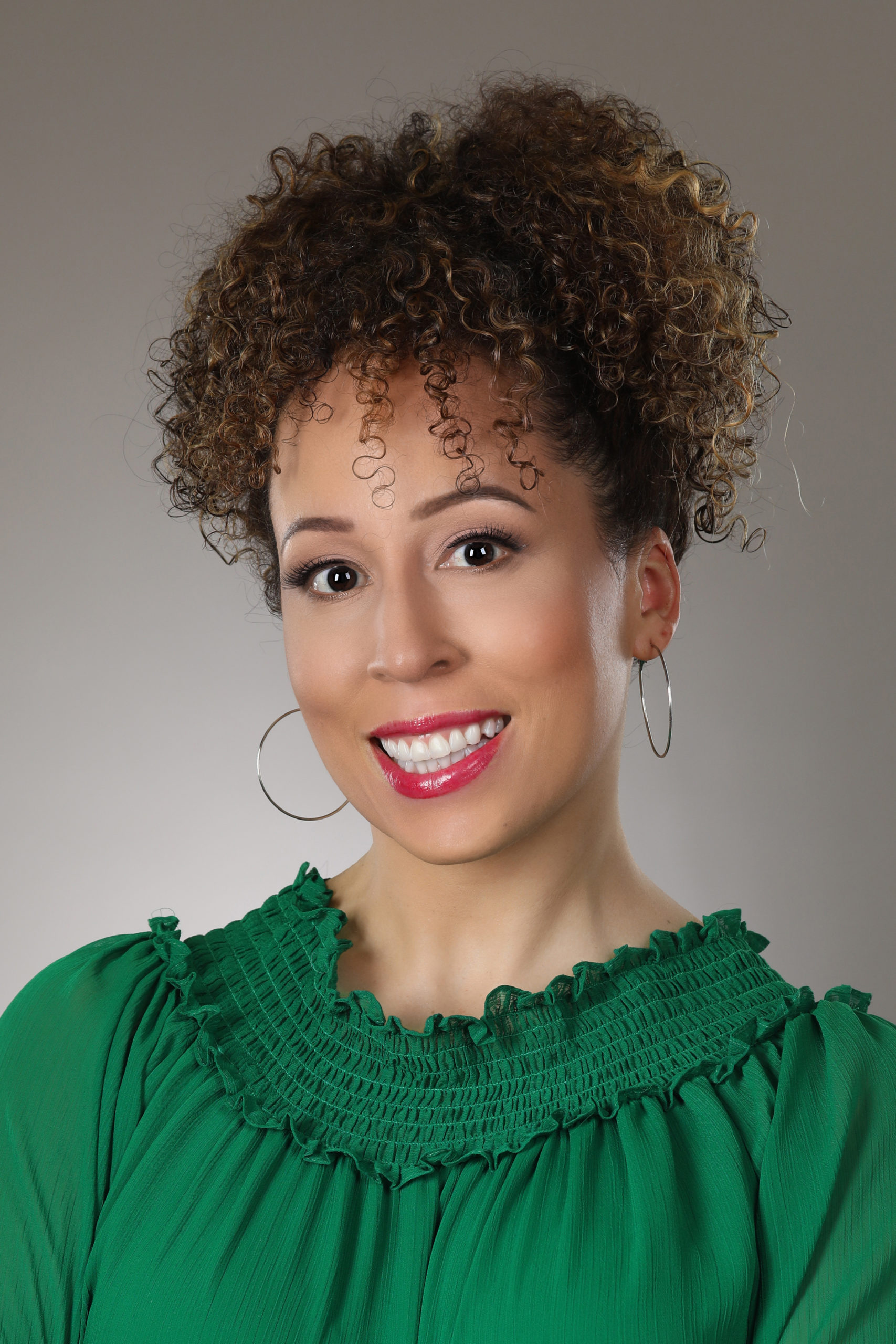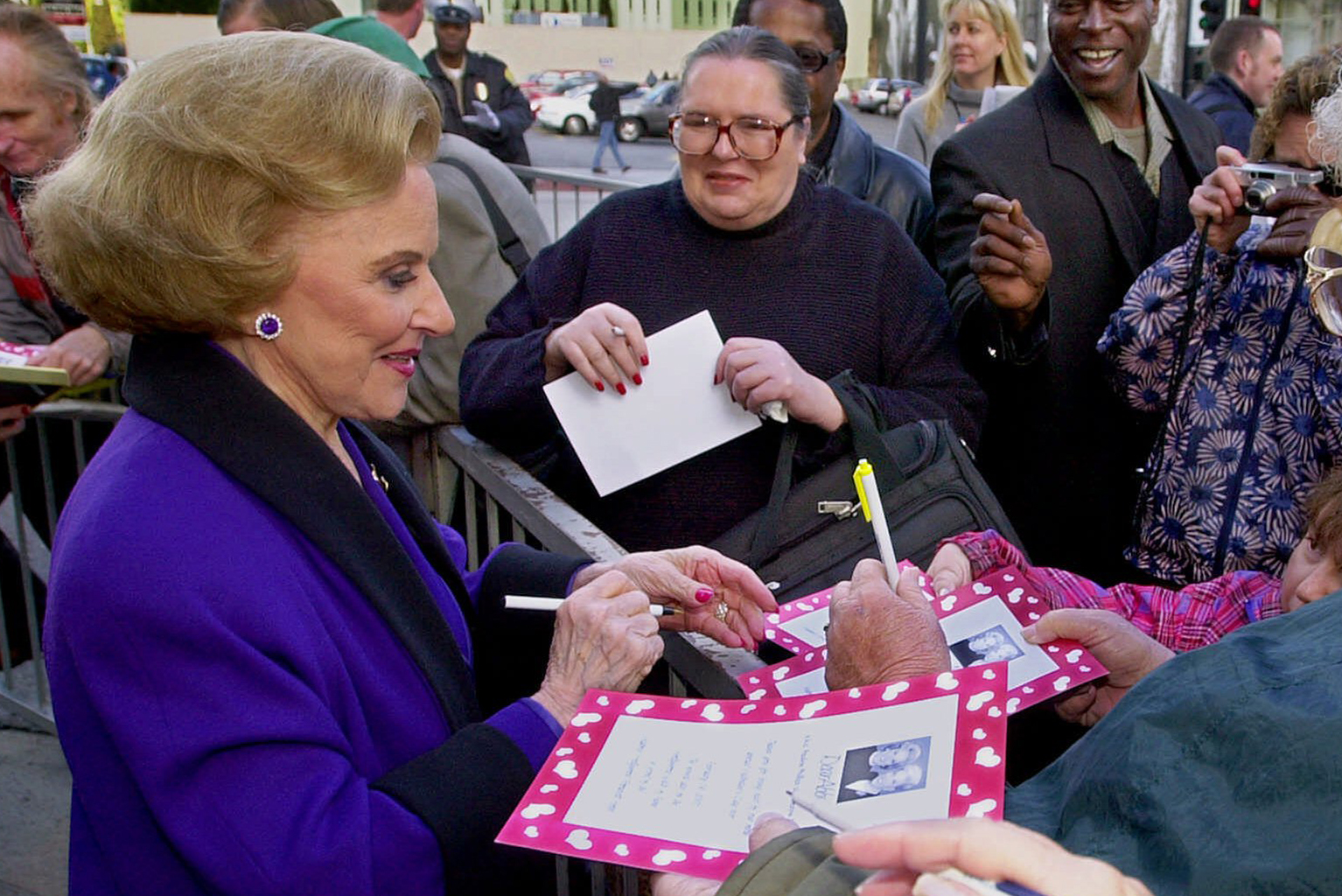The first iteration of Slate’s long-running advice column “Dear Prudence” debuted in 1997. The questions asked in an early piece might seem quaint — or even outdated — by today’s standards.
Is it insulting to unlock the car door for a woman first now that the push of a button can unlock all doors at once, “Lovelocked” asks? Why do some neighbors deign to put holiday lights up 25 days before Christmas, “Scrooge” wonders?
Almost immediately, “Dear Prudence” attracted attention and readers. The advice column has eternal resonance. The feature ran for more than 20 years as Slate’s only advice column.
That changed in 2018, when Slate was redesigning its website. Leaders like Bill Carey, the site’s senior director of strategy, started to crunch the numbers. They came to an important realization about the appeal of advice columns.
“The people who were reading ‘Dear Prudence’ were the ideal reader in terms of loyalty,” Carey said. “There’s something about that format of the advice column that really brings people back and creates that nice loop of people who write in, your columnist of choice answers the question and people comment on that with things like the live chat. You get some real-time responses and some real-time community.”
At the same time, the site’s parenting content was performing well and many of Prudence’s most successful questions were centered on parenting, schooling and familial relationships. That spurred the 2018 launch of “Care and Feeding,” Slate’s second foray into the advice market, this time focused on parenting.
Since then, Slate has created three more advice columns: “Beast Mode,” a pet advice column that ran from 2018 to the beginning of 2020, “How to Do It,” a sex advice column formed in 2019, and recently launched “Pay Dirt,” a money advice series that has already attracted some success.
There’s a reason for all of that investment. Advice columns fit into Slate’s larger mission of helping readers understand their world. And less altruistically, advice is one of the biggest drivers of paid memberships.
Much like the newsletter craze, advice columns foster an intimacy and relationship between the reader and advice columnist. Traffic to Slate’s advice columns tends to be internal — people often come to the site specifically for the column and click through the archives to read older pieces, Carey said. Some readers even engage in what he calls “appointment viewing,” making it a point to check on new advice column content each day.
“We have this set of people who are very much advice first, very loyal advice readers and read across all of our columns,” he said.
Despite readers’ affiliation to one writer, a hallmark of “Dear Prudence” is its ever-changing namesake. Since its start, the feature has had five different writers. And in June, Slate announced its most recent hire: Jenée Desmond-Harris, a former senior staff editor in The New York Times’ Opinion section, taking over for former Prudie Daniel M. Lavery.
She’s a self-professed “longtime huge advice column fan” who previously wrote “Race Manners” for The Root. While she accepts the challenge with a sense of responsibility, she feels that the writers who inhabited Prudence before her leave behind a great formula.
“What they all have in common is a mix of deep compassion, especially for vulnerable people, zero hesitation to call out people who are harming others and a belief that everyone deserves to seek out happiness,” she says. “That’s the recipe, and if you have the ingredients for that recipe, you can handle almost any question.”
[the_ad id=”667826″]
The insides of someone’s life
The position of an advice columnist might appear egotistical at its very root. An advice-giver declares to the universe that they know how you, lowly reader, should live your life.

Jenée Desmond-Harris (Courtesy)
Desmond-Harris knows that feeling well. She’s grappled with the internal voice that says, “Why am I qualified to give advice as my full-time job?” But she comes back to something Lavery once said: Someone asked you to offer advice. That is enough.
It’s a story other advice columnists share. They didn’t necessarily think of themselves as wise life coaches until a publication said, “Hey, would you do this?” When writer Sophia Benoit started working with GQ, they asked her to resurrect an advice column from a woman’s perspective. It was a no-brainer.
“Of course I want to tell men what to do,” she said.
Benoit hoped to write the column as a regular feature for the men’s magazine’s website. Instead, her editors suggested it be part of a weekly newsletter.
“I think people think men don’t read advice columns, which I actually don’t think is true,” she said. “That’s traditional media for you.”
For about two years, Benoit wrote the column regularly and attracted a bit of an online reputation as an advice-giver. She started to get messages from people on Twitter with “14 paragraphs about their ex-boyfriend.” She was torn between being flattered by the gesture and burdened by the time it took to respond to each individual request.
Her tenure came to an end when GQ gave the column to a full-time staffer. Benoit found herself with a void to fill. She actually loved giving people advice.
In April 2019, the writer turned to the artist’s refuge and created a Substack, “Here’s the Thing,” to channel all of her advice column writing. Her first published question came from a single man not ready to commit to one person but still feeling bad about it.
Benoit’s response is validating yet politely challenging. She pushes the writer on some of his preconceived notions while acknowledging that he’s farther along on this realization than others before him. It’s a philosophy she brings to all of her answers.
“I try my hardest to affirm from both my point of view and to the letter writer that you can’t mess this up. It’s life,” she said. “I never want to tell someone that there’s one very obvious, right answer.”
She sees write-ins falling into a few different buckets. The first are people making terrible choices who want permission either to continue or to stop. Another group are those Benoit calls “chronic over-thinkers and feelers” obsessing about their paths and the inevitability of our mortality.
She continues to remind herself — and letter-writers — that life does not often present decisions between an obviously good and obviously bad choice. There’s generally a spectrum, and there’s almost never a “right choice that you’re just missing,” she says.
The last bucket of letters she receives are perhaps the most insidious — the “Am I crazy?” question, generally from a woman.
“Spoiler,” she says, “they never are.”
Other advice columns pursue the genre from a more niche perspective — what your therapist would say or the ethics of a situation or even, in Alison Green’s case, how your manager would react.
Green’s advice column story is similar to Benoit’s in that she had no idea how far her interest in advice would go. She started “Ask a Manager” on a personal blog in 2007 while she was managing a nonprofit in Washington, D.C.
“I just kept seeing people make choices for themselves that I didn’t think were going to get them the outcomes that they wanted,” she said. “I thought it was because they couldn’t see things from the manager’s perspective.”
Green grew up steeped in cultural icon Ann Landers and The Washington Post’s Carolyn Hax. She loved the “voyeuristic” nature of advice columns, getting to see into the insides of someone’s life. So it made sense that she decided to try the form for herself on a lark.
The “Ask a Manager” creator expected to write a few months of posts and end it there. She didn’t anticipate the real appetite for advice in the workplace. When she first started, letters would trickle in. She now receives about 60 to 75 questions a day.
Green has since expanded her portfolio from a blog to writing a regular feature for New York Magazine called “Ask a Boss,” penning a work-themed column for Slate and answering advice writers for Vice. She’s told readers how to make your boss adore you and wondered whether there really is a dream job. Often, she finds that a question starts out about work and ends with a much wider scope.
“There’s no way to give advice on work without getting into much broader themes about psychology and society and the way we relate to each other,” Green said. “It would be really boring if I were only answering questions about how to write a resume.”
During the pandemic, her mail became a fascinating case study. At first, as things were just escalating, people implored her to stop publishing letters about COVID-19. Just as she wondered whether she was talking about it too much, her mailbox lit aflame with the pandemic. For the first few months, roughly 75% of the questions she received were about COVID-19.
She heard from readers wondering why their bosses were suddenly terrified about employees staying on task while working remotely. Then, she got letters from people who hated having to answer intrusive personal questions from bosses about their mental health.
The one thing she missed was letters on annoying interpersonal interactions with coworkers — think, “My coworker sings while I am trying to work” or “My coworker calls me ‘mama’ because I’m pregnant.” Those daily intimacies and annoyances of an office were gone for almost all of 2020.
She’s just now started to notice those small complaints coming back. To her, it’s a bright spot.
[the_ad id=”667872″]
Advice columns last had a moment like this 50 years ago

In this Feb. 14, 2001 file photo, “Dear Abby” advice columnist Pauline Friedman Phillips, 82, known to millions of readers as Abigail van Buren, signs autographs for some of dozens of fans after the dedication of a “Dear Abby” star on the Hollywood Walk of Fame in Los Angeles. Phillips, who had Alzheimer’s disease, died Wednesday, Jan. 16, 2013. She was 94.
(AP Photo/Reed Saxon)
Although the popularity and essence of advice columns may seem a distinctly American concept, the first advice column allegedly began in London publication The Athenian Mercury.
There, questions ranged from the scientific — “Why can an owl see better by night than by day?” — to the philosophical — “Is the soul born with the body?” — to the downright horrifying — “Is it proper that women should be learned?,” The Atlantic reported. The publication was started in 1690 to answer “all the most nice and curious questions.”
For a form that has lasted so long, there are surprisingly few scholars who focus on the topic. Elyse Vigiletti noticed that as she became an informal expert on the subject. As a lecturer in technical communication within the University of Michigan’s College of Engineering, Vigiletti finds that almost “every aspect of media and print and newspapers” have a set of specialists. But advice columns do not.
“In a way, it’s really strange that no one has really picked this up,” she said. “And in another way, it’s not that strange. There are a lot of forms and genres that are perceived to be popular with the housewife-under-a-hairdryer set and not get the attention of some of the more serious forms.”
Her amateur study revealed that, yes, the advice column has changed over time. When she compares beloved Carolyn Hax’s current columns with her archive, which began in 1997, she does notice fewer questions, longer-form writing and more “broad philosophizing.”
“You asked me a question about whether you should make a career change, but let’s talk about what do people want out of life,” Vigiletti puts it.
The last time advice columns had this kind of moment was almost 50 years ago, she said, around the rise of pop psychology.
“So it’s possible that we’re having a similar moment and that the current renaissance is coinciding with some other way in which we’re looking inward,” she said.
But she also cautioned that it’s a mistake to assume that our current era birthed a new kind of advice column. In fact, midcentury magazine Sexology, an entirely sex-themed magazine, had a sex advice columnist in 1952 — long before Dan Savage would rise to fame for his nationally syndicated “Savage Love.”
Even in the 1690s, The Athenian Mercury’s questions offered the columnist a chance to philosophize, albeit often about concepts that affected the general population rather than the individual.
[the_ad id=”667878″]
A more racially diverse advice column field
If a marquee sign were to boast the biggest names (real or pen) in advice column fame, they might go like this: Ann Landers, Abigail Van Buren, Carolyn Hax, Cheryl Strayed and Heather Havrilesky.
All of these writers have one thing in common: They are white women. It’s a phenomenon Vigiletti, the advice columnist scholar, has noticed.
“My sense is that the most famous advice columnists syndicated in newspapers and the cultural touchstones have almost universally been white women,” she said. “But when you think about the fact that almost every little zine and every regional paper have advice columns, I’m not sure if that holds in the same way.”
Vigiletti likens it to the voice of Siri, which is spoken by a white woman. It’s a voice we as a culture have been taught to trust.
For white advice columnists like Benoit and Green, the topic is never far from their minds. Benoit chalks it up to ego — white people likely feel more comfortable assuming their advice is authoritative. They think their experiences are universal.
“My tendency has always been to give the advice that has worked for me,” Green said. “The limitations of my perspective are baked into the concept.”
As a former lawyer and senior reporter on race, law and politics, Desmond-Harris brings an innate understanding of those issues to the role. She also has an array of personal experiences that sets her apart.
“I’m a biracial Black woman, my parents are divorced, I’ve made a major career change and I’ve dealt with infertility and in vitro fertilization,” she says. “I definitely have that package of experiences that might cause me to look with more interest at certain questions.”
Desmond-Harris said the advice column field is becoming more racially diverse. She will not be the first woman of color at Slate to write an advice column — Nicole Chung and Jamilah Lemieux are two women of color who advise parents in “Care and Feeding.”
“I do think it’s an important platform and being one of not too many women of color with access to it is a big responsibility,” Desmond-Harris said.
When it comes to race, she hopes to cut a hard line on certain topics. First point: Racism and sexism are not acceptable belief systems to defend.
“My advice may not be for everybody,” she said. “If you’re racist or sexist or think the status quo is fine or you think nobody should have to evolve or change, if you’ve ever fretted about so-called ‘wokeness’ or ‘cancel culture’ as a way to cover up your discomfort about marginalized people standing up for themselves, we probably won’t share any values and you won’t want my advice.”
Aside from implicit and explicit racial bias, there may still be another reason why some of the most prominent advice columnists are white women — historical sexism.
When newspapers were dominated by men, a time that is still not truly past, women were often given the softer topics — society news or fashion coverage. Advice hits so many of those salient points, from raising children to the manners of a dinner party. For a female writer who just wanted to get her foot in the door, it might have been the only way.
“Maybe Emily Post just really wanted to be a journalist in general and this was a topic she could write about,” Vigiletti said. “And then the advice column became her genre and the genre of the white woman.”
It’s not tradition, it’s popularity
In many ways, the last 10 to 15 years have been a “renaissance of advice columns,” Vigiletti said.
So what is the reason behind their endurance? Have we come to expect the advice column so much that we can’t get rid of it?
Vigiletti guesses that it’s the other way around. It’s not the tradition of advice columns that’s kept them going — it’s their popularity.
For the advice columnists we know and love, it’s personal. When Green first started working in nonprofits, she did so with a lofty goal — to make the world a better place. In writing “Ask a Manager,” she still feels like she gets to do that every day.
“I want people to get the outcomes that they want in their lives and ultimately find happiness, which maybe sounds very grandiose for a workplace advice column, but that’s what people want,” she said. “I’m glad to play a role in doing that.”







